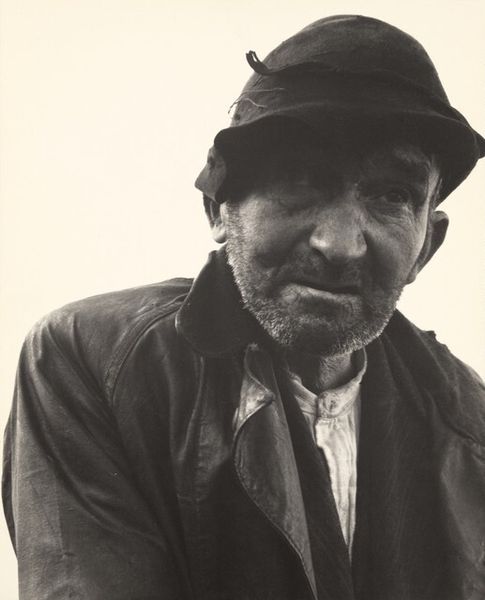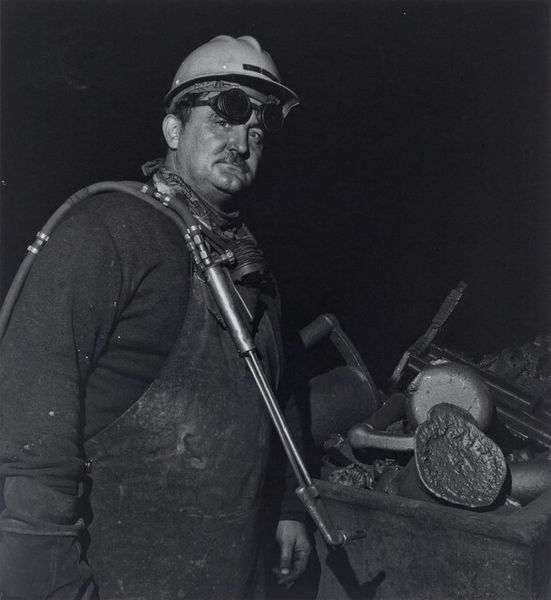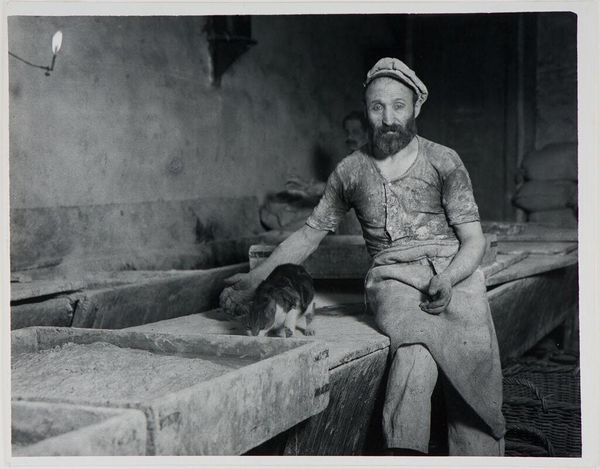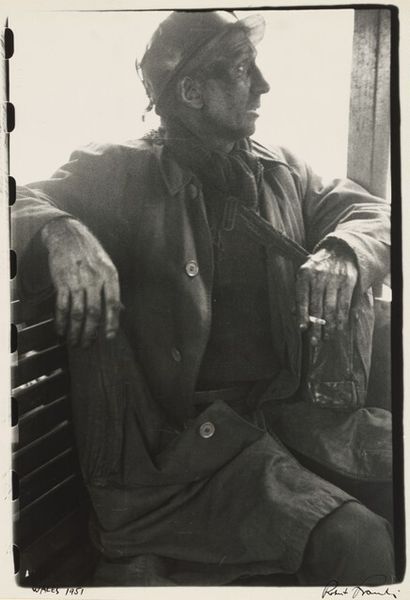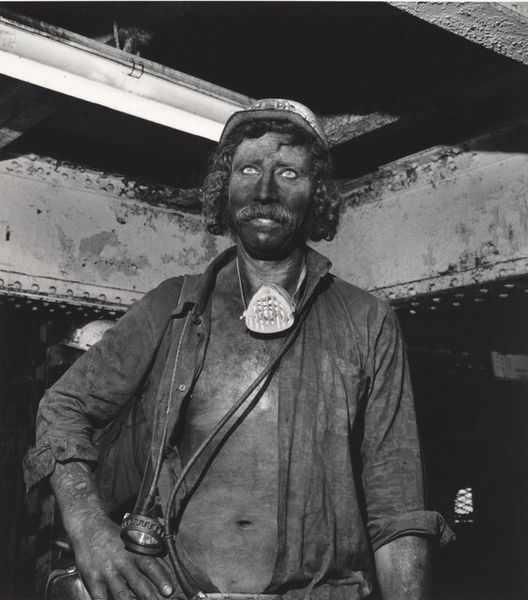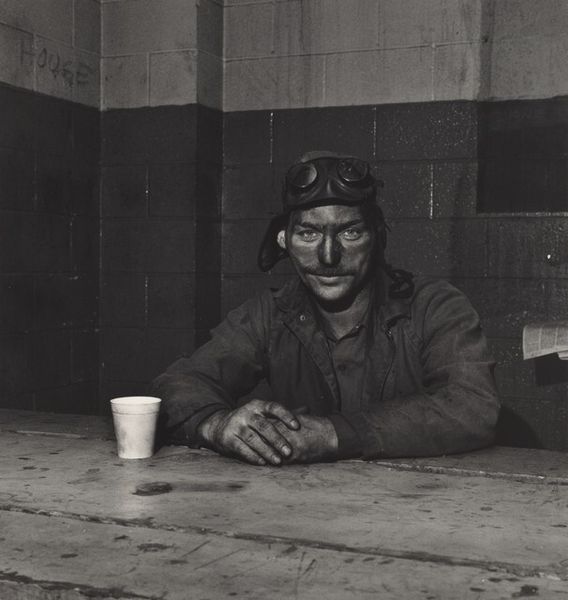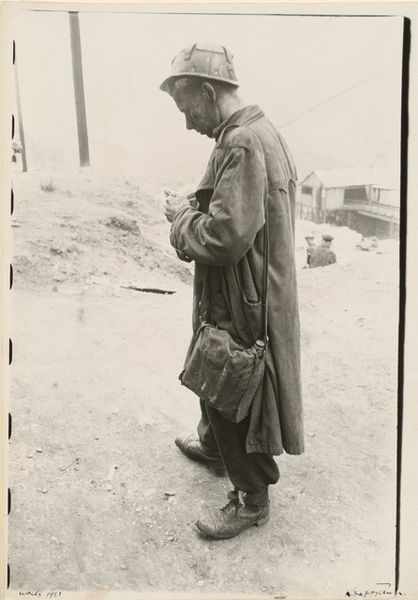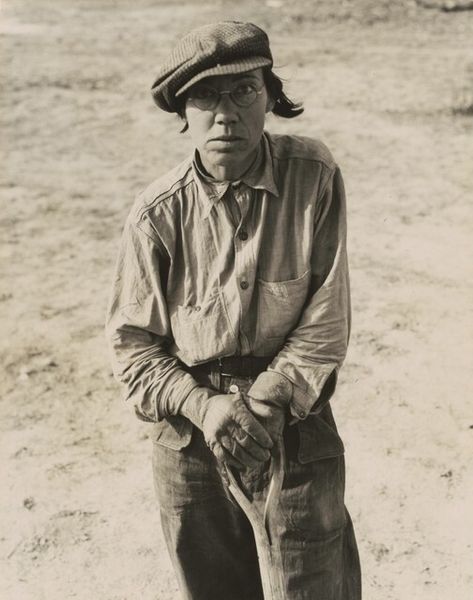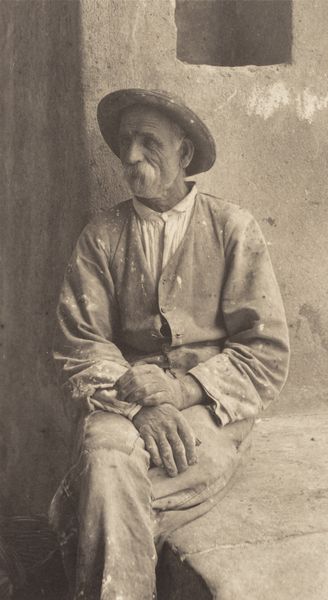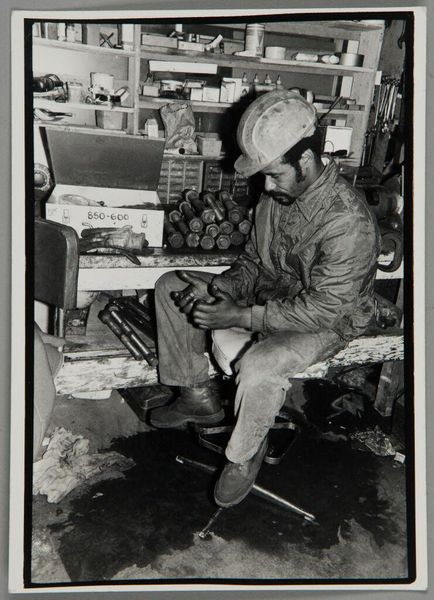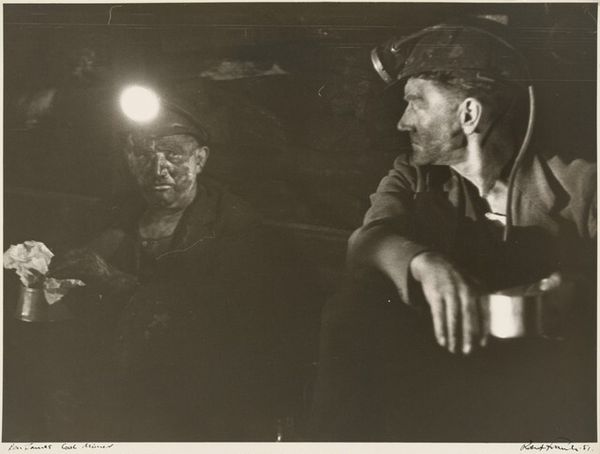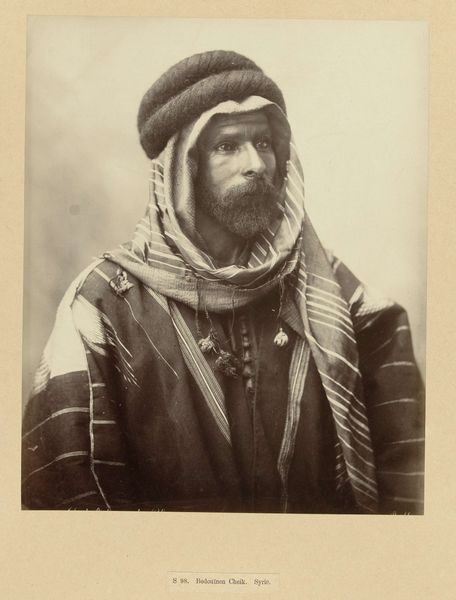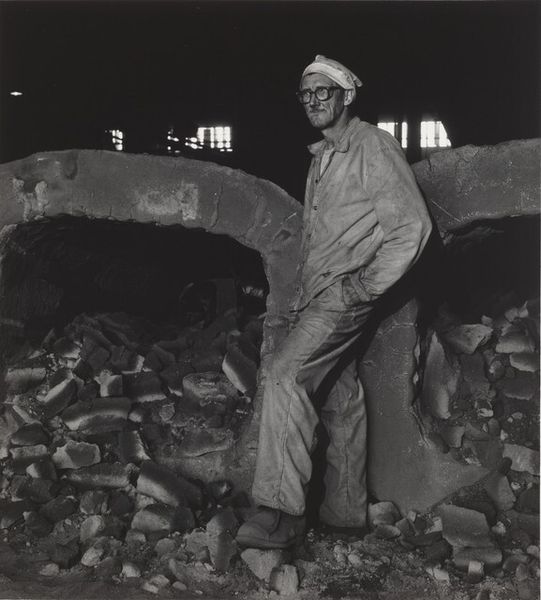
Steger, Shenango Ingot Molds (Working People series) 1978 - 1981
0:00
0:00
photography, gelatin-silver-print
#
portrait
#
black and white photography
#
portrait image
#
social-realism
#
photography
#
black and white
#
gelatin-silver-print
#
monochrome photography
#
monochrome
#
monochrome
Dimensions: image: 18.3 x 17 cm (7 3/16 x 6 11/16 in.) sheet: 25.2 x 20.3 cm (9 15/16 x 8 in.)
Copyright: National Gallery of Art: CC0 1.0
Editor: We’re looking at Milton Rogovin's "Steger, Shenango Ingot Molds (Working People series)," taken between 1978 and 1981. It's a gelatin-silver print. The immediate thing that strikes me is how the subject is framed by this massive, almost brutalist-looking object. What do you see in this portrait, considering its formal elements? Curator: Formally, the photograph is striking for its use of light and shadow, creating a dramatic contrast. The subject's face is well-lit, drawing the eye, while the surrounding environment fades into the background. Notice how Rogovin employs the ingot mold itself as a compositional element, its geometric form contrasting with the organic lines of the human figure. It presents a tension between the man and the mold. Does this man work at the steel forge? Editor: Possibly, his posture suggests weariness or resignation, echoed by the unadorned setting. It’s a starkly composed image, but in its details—the set of his jaw and his weary glance– I can only read the artist’s respect and awe for the dignity of labor. Curator: Precisely. Look at the textures. The rough, weathered surface of the mold stands in contrast to the man's softer skin, rendered beautifully by the gelatin-silver print. This juxtaposition, created by grayscale contrast, tells the silent story of physical labor. Note the careful consideration Rogovin gives to shape and volume; observe the cap on the man’s head, and the way the clothing wrinkles with time and age. How does it make you feel? Editor: I think it evokes empathy and…respect. Curator: Agreed. Rogovin skillfully employs light, shadow, and texture to evoke an emotional response. This isn't merely a documentary photograph; it is an intentional artistic representation celebrating labor by honoring the individual worker. Editor: This formal analysis provides an objective path into a very affecting photograph! Curator: Indeed. Focusing on the image’s construction allows one to build an understanding of Rogovin’s larger statement and artistic success.
Comments
No comments
Be the first to comment and join the conversation on the ultimate creative platform.
